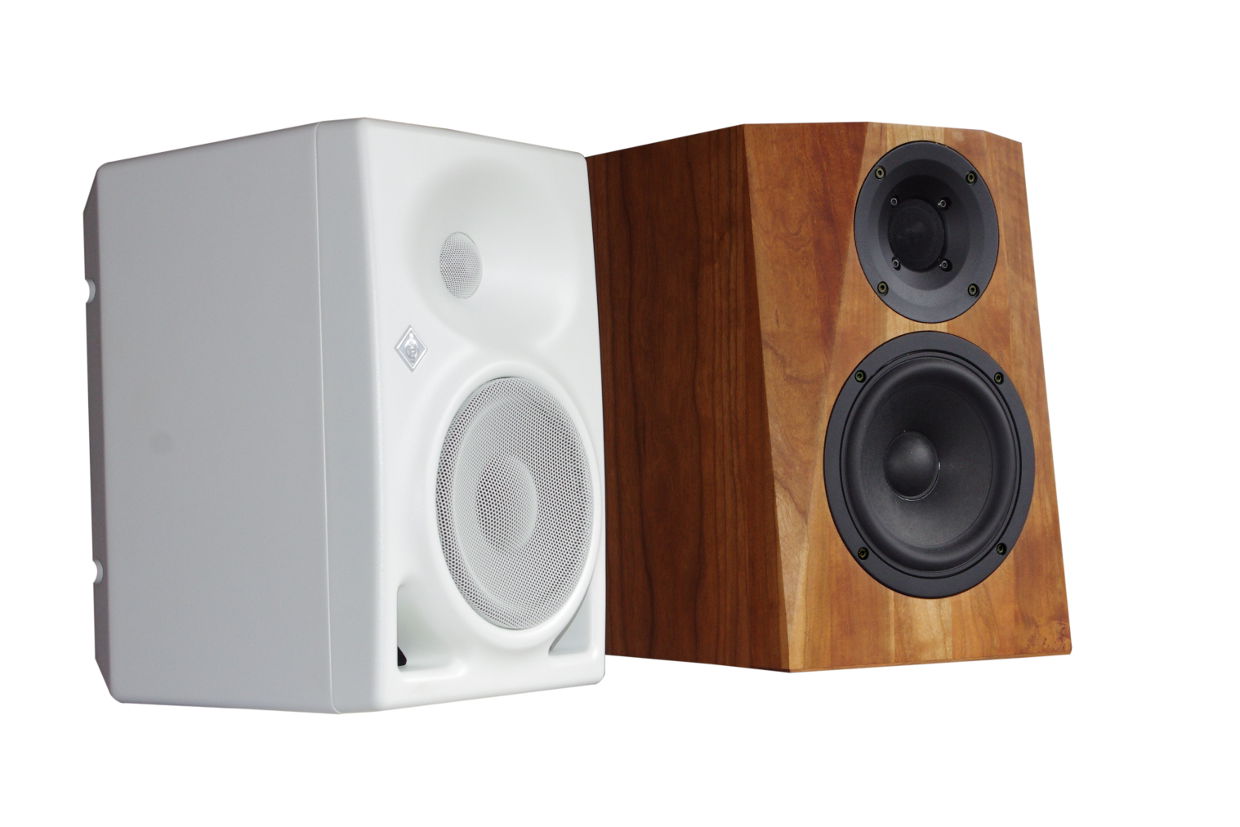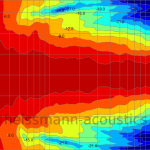That's basically what it boils down toit is not simple
Imagine doing a passive subwoofer room correction...

Obviously, a passive filter cannot mess with causality as an FIR filter can.
That's basically what it boils down toit is not simple

Exactly, it always depends on the usage, that's why on subwoofers and large power PA systems you rarely see passive solutions, but for example for a typical compact 2-way loudspeaker the numberr of advantages of an active solution can be often be similar to the number of disadvantages, like hiss, extra cabling, AD/DA for DSP etc, reliability/cooling, especially on a non unlimited budget.That's basically what it boils down toYou can do all kinds of wacky shit passively, but it's going to be complex, big, and expensive.
Imagine doing a passive subwoofer room correction...
Obviously, a passive filter cannot mess with causality as an FIR filter can.
Regading, the DXT-MON, seems like a good speaker. Very linear fr response and smooth off-axis.People need to stop mixing all things together and making such generalisations. As said a well implemented passive crossover can be in a blind test indiscernible from a good active one with the same total filter function, it is just that on a passive one a loudspeaker engineer is more limited in what filter options can be implemented. Now about that not expedient KH 80 example as an argumentative help, the same total linearity could be even obtained with a passive crossover and many passive or DSP filters and even high slopes can be achieved with a passive crossover, like for example Gauder loudspeakers have (up to 60dB/oct) and the very good vertical directivity is also a result of the small driver sizes (and with a coaxial driver you can get an even better even with low crossover slopes). If I would engineer a loudspeaker nowadays I would also use an active DSP crossover, but the impression that threads like these give is that passive ones always necessarily sound audibly worse, which they don't, as always the total engineering and implementation counts much more than which components and route was chosen.
By the way in the German DIY loudspeaker community there was several years ago the challenge if the performance of the very good active KH120 could be also achieved with a DIY and the successful answer was even passive. https://heissmann-acoustics.de/en/dxt-mon-vs-neumann-kh-120a/
For multichannel, there is a clear case where perfomance may become a real hassle. For a baseline system, it is not that terrible, but for height speakers, active requires some serious logistics. Of course it can be done, but logistics do matter when dealing with 9, 11 or even more speakers.As the music is mainly stored in digital domain, it makes sense to keep it digital as long as possible in the playback chain, so that only one domain transformation is needed. I understand the comments about possible repair costs and hassle in case of speaker-integrated amplifier failure, but I see no reason why the amplifiers could not be made as easily removable units that could be swapped by users. Ditto for digital electronics.
Of course, for those who love separate boxes for maximum flexibility, we could have systems consisting of the following components: A streamer - a DSP (for accoustis correction) - Second DSP(for speaker specific crossovers) - DACs for each driver - Amplifiers for each driver - Speakers(basically just drivers in boxes).
Easiest way I know is to have two of the same speaker, and put the best passive you can make in one, and the best active in the other.I'm not even sure how you could design a meaningful test of passive vs active. I guess you could put the drivers in their box(es), with terminals to attach either a passive or active crossover. Fine. But then the quibbling begins. How much EQ circuitry (traps etc) will you tolerate in the passive? Can it end up being a monstrous collection of coils and capacitors? How powerful can the DSP be for the active? Who does the programming? And the vagueness just gets worse...
Passives have the distinct disadvantage that some otherwise excellent drivers have bad spots that need EQ. That can get "partsy" with a passive, adding traps etc. With DSP it's just another PEQ point or three.Easiest way I know is to have two of the same speaker, and put the best passive you can make in one, and the best active in the other.
Measure and listen.
I don't think it makes sense to constrain either the passive or the active, other than how much time/money/effort am I willing to put into each type to make the best i can.
That's all i care about; what's the best sound I can make....i swear, if a monkey beating a piece of plywood was the best speaker i ever heard, that's what i want! haha
I don't know how to make passives, so all my speaker comparisons with passives have been against what the manufacturer made.
Having a pair of speakers that measure that same whichever way they are setup is obviously necessary. Haven't had a problem there, and if it gets suspect, I just swap which speaker gets what and re-compare.
Very true.People need to stop with this narrative that passive crossovers can be just as good as active crossovers. they can't, never will never were. the Neumann KH80 just mops the floor with any passive 2-way with regards to its linearity while being very modestly priced. Heck even vertical lobing is almost non-existent due to 48dB/oct sloped crossovers.


I'm on your side. But as I said, it's a hard thing to test or prove.Very true ! We, who have experience in a lot of DIY building with dsp crossovers KNOWS that this is real and its a fact.
No one , I say no one, has shown any links with information were passive are as good as actives in this thread. There are just a bunch of passive believers, who really wants to believe that passive crossovers are just as good as actives, which they arent, as Linkwitz and Elliot AND Genelec/ Neumann already has shown. Its time to wake up and help us all to take the next active dsp-step into the future of hifi.
You are a true believer without any fact to prove your statement in this matter.Anyhow the measurements from Amir and Erin looks suprisingly similar except bass extension and a higher treble of the active. Distortiion is similar. Erin shows +/- 3 dB 80-16000 Hz for the active one with a dip 1-3 kHz. The passive one looks the same with a dip 1-3 kHz.
So if you would EQ the low and high to be the same for both speakers, you would most likely not hear any difference. With on and off-axis being virtually the same, distortion the same, there is no other magic in the active one that would make it superior to the passive LS50. If there is, one should have read a lot of papers about it by Toole and company.
Nope, I am not a believer. Toole et al. has already published most of the research. A linear response with smooth off-axis dispersion is ideal. Such as the DXT-MON passive monitor:You are a true believer without any fact to prove your statement In this matter.
Havent you read the Elliot and Linkwitz papers I already linked to in the beginning , or are ju resistant to facts and physics ? The evidence of active superiority is there for everyone to see. Why dont you show ME some links for your statements thpassives as good as actives ? I guess you cant, cause theres no such information….

 heissmann-acoustics.de
heissmann-acoustics.de
That’s a thing a complete Meridian home theater was this . DSP crossover in each speaker , room correction in the controller for all those speakers. A true 24/96 digital path to 7.1 speakers.As the music is mainly stored in digital domain, it makes sense to keep it digital as long as possible in the playback chain, so that only one domain transformation is needed. I understand the comments about possible repair costs and hassle in case of speaker-integrated amplifier failure, but I see no reason why the amplifiers could not be made as easily removable units that could be swapped by users. Ditto for digital electronics.
Of course, for those who love separate boxes for maximum flexibility, we could have systems consisting of the following components: A streamer - a DSP (for accoustis correction) - Second DSP(for speaker specific crossovers) - DACs for each driver - Amplifiers for each driver - Speakers(basically just drivers in boxes).
May I ask what other first hand experience you have with active, besides the 20 year old adventure?I read a lot Elliot pages when I modified my LR active filter 20 years ago being a believer that active all the way must be the ideal. I am not convinced today. It is the final result that is important. And LS50 active is not accurate enough for my needs.
